NOTE: I have been given permission by the officials at The Biltmore Company® to include these images on my site. Permission is required for use of these images for any purpose from The Biltmore Company.
Biltmore Estate--Introduction and Index (page 1 of 7 pages)
Richard Morris Hunt
Frederick Law Olmsted, landscape architect
1895
Introduction
This country retreat, built for George Washington Vanderbilt III, is located in the scenic Appalachian mountains in western North Carolina in the town of Asheville, known in the late nineteenth century as a health resort. This large estate was planned as self-supporting with gardens, a nursery, farms, and forests surrounding the estate. The name Biltmore derives from "Bildt," Vanderbilt's ancestors' place of origin in Holland, and "More," Anglo-Saxon for open, rolling land.
The large house was modeled on the French Renaissance chateau, with these characteristic features: steeply pitched roofs, towers, turrets, and extensive sculptural ornamentation. As John M. Bryan explains (alluding to the work of Mark Girouard), this style was "the Nouveau Riche style" of the third quarter of the nineteenth century in England and Victorians were attracted to the skyline silhouette of this dramatic style (41-42). Hunt and Vanderbilt had in fact visited a number of these estates in both France and England and they were especially impressed by Waddesdon Manor in Buckinghamshire (1877-83), which was one of the principal sources for the east elevation of Biltmore Estate. Size was also important, for this residence is the largest private house in the United States. According to official publications, this country estate has 4 acres of floor space, 255 rooms, and 43 bathrooms.
Although the main building had its source in sixteenth century France (via Victorian England), it was designed with the most up-to-date technological advances--central heating and plumbing (including instantly available hot water), electricity, mechanical refrigeration, two electric elevators, and an electric dumb waiter.
Built of Indiana limestone, this solid house was sited facing east with a front facade of more than 375 feet. The western facade (or rear) has an extensive porch, opening on to the main rooms of the house, in order to take advantage of the lofty view. At the north end of the house, Hunt placed the stables as a way of protecting the house from the wind. The south end of the house, where the library is located, opens on to an arbor with wisteria and looks over a bowling green with a small teahouse.
The huge estate of thousands of acres was planned by Frederick Law Olmsted (the designer of New York's Central Park) with a meandering approach road, imported plant material (which seems natural), and an impressive "Esplanade," or forecourt, leading to the main house.
Index
Works Consulted:
John M. Bryan. G. W. Vanderbilt's Biltmore Estate: The Most Distinguished Private Place. New York: Rizzoli, 1994.
A Guide to Biltmore Estate. Asheville, NC: The Biltmore Company, 2001.
Go to page 2.
 Click here to return to index of art historical sites.
Click here to return to index of art historical sites.
 Click here to return to index of artists and architects.
Click here to return to index of artists and architects.
 Click here to return to chronological index.
Click here to return to chronological index.
 Click here to see the home page of Bluffton College.
Click here to see the home page of Bluffton College.
© 2002 Mary Ann Sullivan.
I have photographed (on site), scanned, and manipulated all the images on these pages. Please feel free to use them for personal or educational purposes. They are not available for commercial purposes.


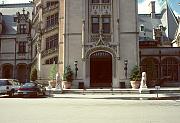

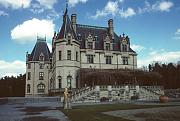
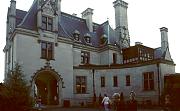
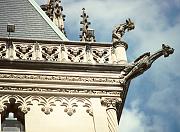
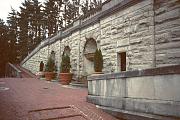
 Click here to return to index of art historical sites.
Click here to return to index of art historical sites.
 Click here to return to index of artists and architects.
Click here to return to index of artists and architects.
 Click here to return to chronological index.
Click here to return to chronological index.
 Click here to see the home page of Bluffton College.
Click here to see the home page of Bluffton College.
